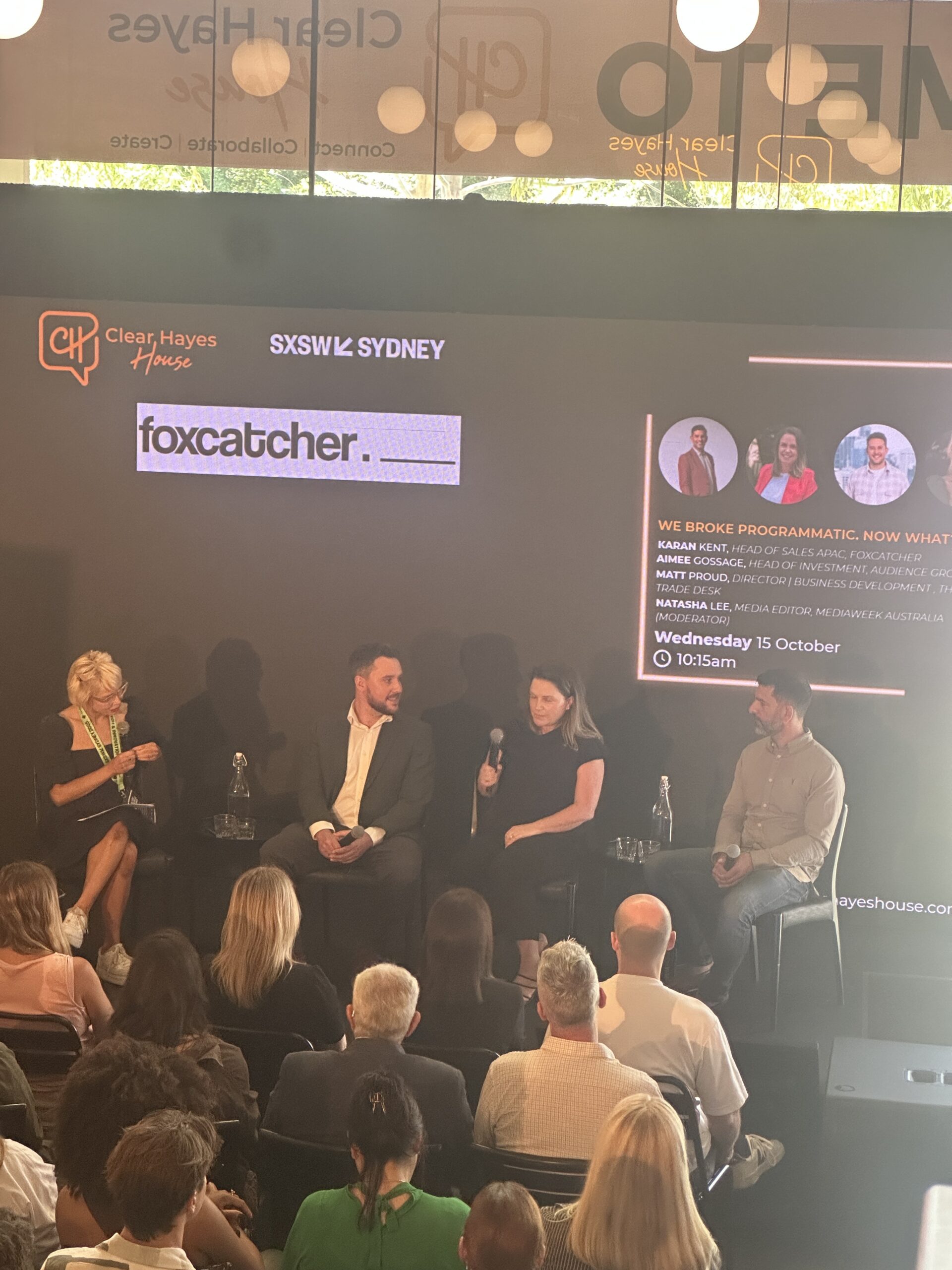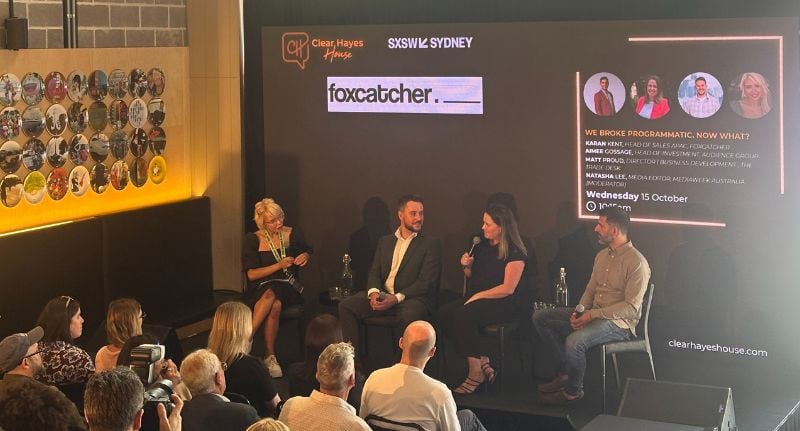As automation reshapes the media landscape, the promise of programmatic advertising, efficiency, precision, and scale, still feels tantalisingly out of reach.
That was the consensus from a lively industry panel featuring Foxcatcher’s Head of Sales APAC, Karan Kent; The Trade Desk’s Matt Proud; and Audience Group’s Aimee Gossage, who unpacked where programmatic stands today, and where it keeps falling short.
The utopian promise
Kent opened the discussion with a pointed reflection on the gap between the industry’s expectations and reality.
“So when we enter the world of programmatic, it’s the utopian world where automation would run everything, time efficiencies, publishers would get more money, CPMs would drop, yields would improve paradoxically,” he said.
But the perfect picture never quite materialised.
“We were also promised that as consumers, we would see the most relevant adverts at the right time, we would see improved ROI, people would get their time back, we would target people on a one-to-one basis.
“And all this stuff about where the world can go, the reality is that that’s impossible,” he said, pointing to privacy shifts and the constant evolution of technology.
He added that even in an automated ecosystem, the human factor can’t be ignored.
“As technology evolves, humans have to keep up with that movement at the same time. I think that’s really challenging for everybody.”

A decade on
For Gossage, who’s spent ten years in ad tech, the promise of simplicity has become one of the industry’s most enduring myths.
“Programmatic was really the up-and-coming technology that no one knew much about, but it was the place to be,” she said.
“There were still very much cookies. We could identify people or identify cookies, I should say. We were chasing faces, not just places. The utopian was direct-to-publisher-type inventory conversations.”
The problem, she noted, is that supply paths remain anything but direct: “We all know that supply paths are not direct, but we wish they were.”
A fragmented ecosystem
Proud agreed the complexity has only deepened.
“Technology is constantly evolving. But it’s a fragmented marketplace.” he said.
“If we look back at what programmatic was when it was first on the earth, it was very much around web display. We’re looking at it now – audio, CTV, programmatic at home. We’ve got gaming in there as well. There’s retail capabilities. There’s been a huge amount of fragmentation.”
That fragmentation, Proud said, has led to silos across the industry.
“Not just fragmentation amongst publishers across the open internet, but also these siloed gardens that are still within there as well. From a marketer’s perspective, I don’t envy the kind of issues that arise when you’ve got duplications or there’s something over here that isn’t talking to what’s happening over here.”
Still, he sees opportunity amid the chaos. “Programmatic presents an opportunity to learn through every single doorstep. It’s that accountability and accessibility that comes with it,” he said.
“At the end of the day, marketers are in the business of driving revenue, driving sales, driving brand awareness, and loyalty as well. So understanding what’s at the core of that and using that as your north star is key.”
The rise of MFAs and the messy middle
The conversation turned to one of the industry’s current flashpoints: MFA (Made-for-Advertising) sites. Gossage didn’t mince words.
“We’ve got MFA sites popping up, supply path challenges, and some people in the room might not realise that there’s 146 ways to buy one piece of inventory,” she said.
“Trying to cut out all of that rubbish in the middle to make sure we’re driving efficiencies for our clients.”
Having worked on both the sales and agency sides, Gossage said her focus now is on “sifting through a lot of the stuff” to find the best partners. “No one can be the best at everything,” she said.
“Sometimes you’ve got to connect a few of the best players to create what we would like to think is utopian.”
Transparency, trust, and the human factor
Kent said the programmatic dream of total transparency is still a work in progress.
“We were promised the world, free open transparency, no hidden fees, everyone would know exactly where their ad went, how much it cost, what fees were there,” he said.
“But there’s no evidence in this. And there’s like 5.5%… where are the hidden fees? Who’s taking a ticket? Is real money getting taken? Well, we need to have a clearer idea of where the money could spend and where it’s going.”
For him, the key lies in reconnecting strategy and execution.
“For this to become more efficient and more effective, the programmatic team have to have a policy at the table and they have to be involved in that initial conversation,” he said.
“The way a lot of agencies are set up, that separation of church and state, means the original KPI can get diluted before it even reaches the digital acquisition team.”
A call for clarity and collaboration
Across the panel, there was one clear through-line, that the industry’s biggest challenge isn’t automation or technology, but coordination.
As Gossage put it, “Our head of strategy is not across the digital landscape as much as myself and the team would be, so therefore she’s relying on us to be like, if this is what we’re trying to achieve, how will we do it?”
And when Young was asked about auctions and yields, his answer captured the paradox of progress: “Anyone can be a content creator, anyone can monetise their content, but whether or not it’s brand safe, brand suitable for our clients, a lot of the time, while we’re proactively blacklisting and allowlisting, new stuff pops up all the time. All the time.”

